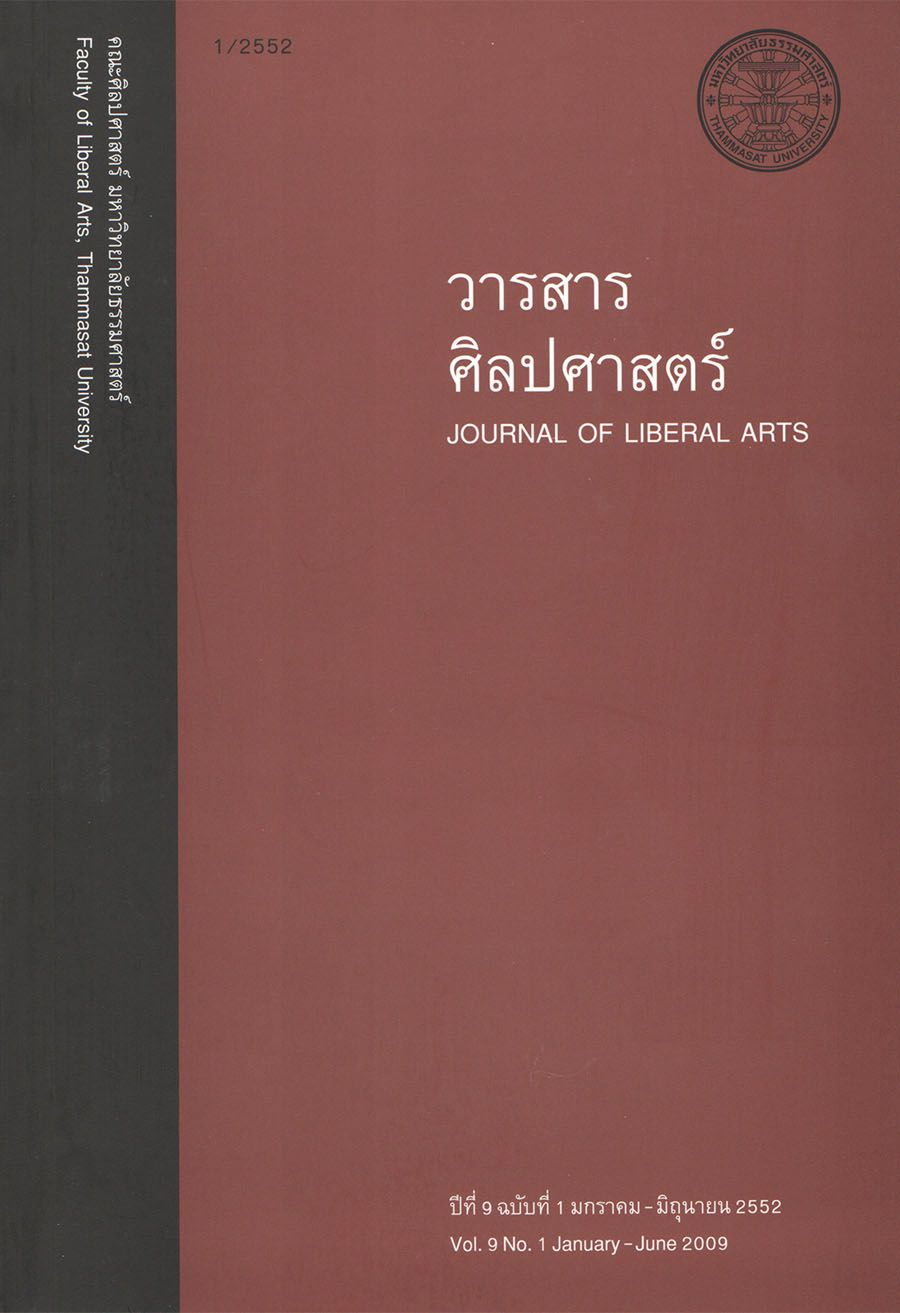การกล่าวเลี่ยงในภาษาไทยและภาษาอังกฤษแบบอเมริกัน
Main Article Content
บทคัดย่อ
บทความนี้นำเสนอผลการวิจัยเกี่ยวกับกลวิธีการกล่าวเลี่ยงที่ปรากฏในหัวข้อสนทนาที่อ่อนไหวต่อความรู้สึก 5 หัวข้อ อันได้แก่ การกล่าวถึงความตาย การมีสภาพบกพร่องทางสมอง การประกอบอาชีพขายบริการทางเพศ การถูกข่มขืน การติดโรคภูมิคุ้มกันบกพร่อง ผู้วิจัยเก็บข้อมูลโดยใช้แบบสอบถามกลุ่มตัวอย่างประชากรคือ ชาวไทย 40 คน และชาวอเมริกัน 40 คน กลวิธีการกล่าวเลี่ยงที่พบ จำแนกออกได้เป็น 5 กลวิธีหลัก คือ การไม่กล่าวตรง การไม่กล่าวความจริง การกล่าวแสดงความรู้สึก การปฏิเสธ และการเพิกเฉยต่อประเด็น กลวิธีหลักเหล่านี้สามารถแบ่งออกเป็น 13 กลวิธีย่อย ผลการวิจัยแสดงให้เห็นว่าหัวข้อสนทนามีอิทธิพลต่อการเลือกใช้กลวิธีการกล่าวเลี่ยง เช่น ในการกล่าวถึงการมีสภาพบกพร่องทางสมอง ผู้พูดมักเลือกใช้การกล่าวให้ข้อมูลน้อยกว่าความจริง และในการกล่าวถึงความตาย ผู้พูดมักเลือกใช้การกล่าวอ้อม นอกจากนี้ ผู้วิจัยอภิปรายเกี่ยวกับอุปสรรคในการดำเนินชีวิตและทางออกของภาวะกลืนไม่เข้าคายไม่ออก รวมทั้งได้พิจารณาความสัมพันธ์ระหว่างการกล่าวเลี่ยงกับการสื่อสารแบบไม่ตรงไปตรงมาประเภทอื่น ๆ อีกด้วย
This paper provides findings from a study of avoidance strategies based on five sensitive topics: death, having Down’s syndrome, being a prostitute, being raped and being HIV-positive. The data were collected from questionnaires completed by forty Thais and forty Americans. The findings can be broadly categorized into five super-strategies: indirect utterance, lie, emotion-related expression, rejection and ignoring utterance. These super-strategies can be further divided into a total of thirteen sub-strategies. In addition, the use of avoidance strategies varies from one topic to another: speakers from both culture used the understatement strategy with the highest frequency on the topic of having Down’s syndrome and used the indirect utterance with the highest frequency on the topic of death. These difference are discussed in a manner which throws a pragmatic light on how people in both cultures approach life obstacles and resolve tensions in communicative dilemmas. The relationships between avoidance language and other types of indirect communication are also discussed.


